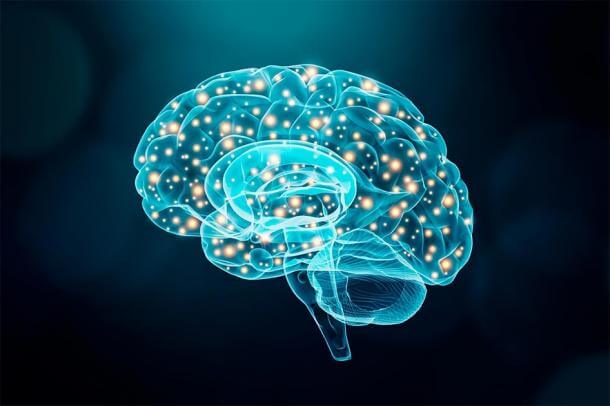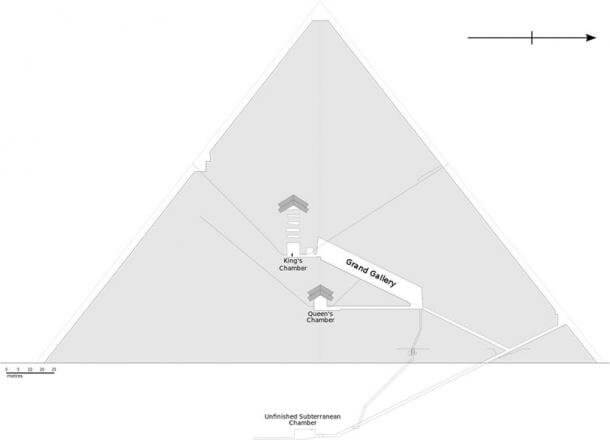 7
7




 7
7

 2
2

 21. 04. 2024
21. 04. 2024

 20. 04. 2024
20. 04. 2024
 4
4

 19. 04. 2024
19. 04. 2024
 29. 05. 2020
29. 05. 2020

The concept known as "genetic memory" is much less researched and much more controversial than what we know as "ordinary" memory. Although we know many examples from the animal world (see: Gallagher, 2013), according to the renowned psychiatrist and author Dr. Darold Treffert also find these mysterious genetic memories in humans (Treffert, 2015).
Treffert's research focused on "savants," or scholars. These are people who are exceptionally gifted in certain skills and have completely extraordinary and specialized skills; Whether it is art or mathematics, linguistics or music composition, all savants have an innate ability to excel in their respective fields far beyond what we can consider commonplace. According to Treffert and many others, these skills can be "inherited" through some form of the genetic code that was already present in the brain. Individuals who exhibit these traits from early childhood are known as "congenital" savants. However, savants were most often not born into a family of other savants, and in some cases these miraculous gifts will not become apparent until later in adulthood, and these are called "sudden" savants.

Imaging of the human brain with enhanced neuronal activity.
So what has to happen in the brain for this savantism similar to the famous Rain Man to manifest?
To better understand this, you must first become familiar with the third and final type, the "random" savant. This happens when special abilities appear only after a person has suffered some significant brain damage, often in the left fronto-temporal region (Hughes, 2012), so it looks as if one is awakening to the world with these miraculously newly acquired abilities. Treffert believed that this was the key to understanding the phenomenon, and devoted most of his research to it.
Subsequently, in a 2014 article published in the journal "Scientific American", he presented the bold idea that we can all have the abilities of savants. For some, this may be fantastic news (I personally have always wanted to be much better at math…), but what Treffert adds has somewhat shattered my dreams of actually mastering my calculations. He noted that this ability can only manifest itself "if the right brain circuits are activated or turned off by electrical stimulation", which occurs in a process he calls "3 R" - Rewiring, Recruitment and Release (Treffert, 2014, P.54 ).
It further explains how a head injury changes the rewiring of parts of the brain and then helps them to recruit and "strengthen newly formed connections between areas that were not previously connected" and thus essentially create new manifestations of consciousness. This is followed by a sudden release of “dormant capacity” - genetic memory - “due to better access to newly interconnected areas of the brain” (Treffert, 2014, P.56).

Experts believe that the special abilities associated with genetics can manifest themselves in humans after a head injury. The image is an X-ray of the skull with marked damage.
Treffert believes that the savant is born in this way; genetic memory is successfully accessed, processed and remembered for lack of a better term. Although our understanding of these phenomena is still in its infancy, it is likely to be the same principle that the prominent Swiss psychoanalyst and founder of analytical psychology, Carl Jung, described as "collective unconscious," in which our personal consciousness (what we ourselves experience) "It rests on a deeper layer that does not come from personal experience" (Jung, 1968, P. 20).
An important question may be: can we gain access to these skills without being fortunate enough to be born with genetic memory already available or, conversely, to have such bad luck and suffered significant brain damage?
Take a closer look at an important experiment conducted by the University of Sydney's "Center for Mind" in 2006. The researchers used a "polarized electric current" to "reduce activity in the left hemisphere" of the brain, among other things, while increasing activity in the right. hemisphere ‟Using this repeated transcranial magnetic stimulation (rTMS),“ these researchers evoked in human volunteers the ability of savants, především manifested primarily in improved problem-solving ability (Treffert, 2014, P.56), using low frequencies of only 1 Hz (Snyder et al., 2006, p. 837) (see also: Young et al. 2004). This research shows that through low-level electromagnetic stimulation, it is possible for some people to "artificially" induce these latent savant abilities, which are most likely hidden in genetic memory.
At this point, you're probably wondering what this has to do with our ancient history? This question is certainly relevant. That is why I will now try to answer it.
According to my theory, once upon a time, quite possibly at the very beginning of what we now know as "civilizations," our ancient ancestors sought access to savant abilities and unlocked "genetic memory," which took an unimaginable amount of work and went to extremes. Despite what official Egyptology is trying to convince us, the Great Pyramid of Giza, as many readers surely know, was not originally built as a tomb for Pharaoh Chufu (Cheopse) from the 26th century BC.
Its mysterious builders have put in place "more stone than there is in all the medieval cathedrals, churches and chapels built in Europe combined" (Wilson, 1996, p. 6), solving the problem of aligning 2,3 million stone building blocks perfectly according to the four main of the world parties, taking for its construction randomly they chose "the exact geographical center of the habitable world" (Barnard, 1884, p. 13).

The Great Pyramid of Giza and the Sphinx.
Researchers have long developed various alternative theories about the function of the "Great Pyramid, whose numerous chambers and passages are located with such ingenious precision." One of them is the acclaimed engineer and writer Christopher Dunn, who points out that its arrangement resembles a "drawing of a huge machine," underpinning his theory of the "Giza power plant" (Dunn, 1998, p. 19).
Moreover, this article has not even touched on considerations regarding sound vibrations. Researcher and acclaimed author Andrew Collins has published a fascinating two-volume article on Ancient Origins about a similar phenomenon in, as you have already guessed, the Great Pyramid. In addition, it is clear that our interpretation of history needs a completely different approach, as shown, for example, by the YouTub channels UnchartedX and Ancient Architects. But let's return instead to other fascinating discoveries that are more in line with this topic.
In 2017, a team of physicists working in the Great Pyramid came to the surprising discovery that the pyramid can concentrate electromagnetic energy. Although there has long been much anecdotal evidence that people in the Great Pyramid feel different (countless people have claimed to have altered states of consciousness in certain parts of the pyramid), it is possible that this discovery may take us one step closer to discovering what actually causes these altered states?

Diagram of the Egyptian Great Pyramid showing all the inner chambers, corridors and the underground chamber.
In this research, multip multipole analysis ’was used - a method commonly used to study the relationships between complex objects (in this case, pyramids) and the electromagnetic field. Research published in the Journal of Applied Physics has revealed that the Great Pyramid's chambers can collect and concentrate electromagnetic energy - concentrated tens of meters below ground level in a so-called underground chamber that scientists have long thought contained water from an unknown source. groundwater and the true purpose of which is still not satisfactorily explained. In light of Dunn's detailed and systematic theory, this scientific discovery is certainly an interesting addition to alternative theories about the original purpose of the pyramids. Research by the research team emphasized that "the Great Pyramid scatters electromagnetic waves and concentrates them in the underground area" - this "underground area" is the Giza plateau itself, a huge limestone quarry on which this pyramid was deliberately built, whose underground chamber cuts deep below the platform. (Balezin et al., 2017).

Giza plateau from a bird's eye view.
The project's scientific leader, Dr. Evlyukhin, emphasized that his team had "achieved remarkable results for which there could be significant practical application," followed by a doctoral student from the Faculty of Physics and Technology at ITMO University who enthusiastically noted that pyramidal nanoparticles are "promising for practical application. in nanosensors and efficient solar cells Kom (Komarova, 2018).
Of course, ordinary majority media such as the British Daily Mail — the eternally shining beacon of truth — quickly reassured us that “the ancient Egyptians who built the pyramids more than 4400 years ago had no idea of this feature of the building” (McDonald, 2018). Of course, this ingenious feature had to be a coincidence… must have been… for sure?
To begin with, the Great Pyramid is as mysterious as it is colossal, but if you start studying it more and more in detail, you will find that nothing on these 5,75 million tons of stones is accidental. It was thought out to the smallest, innermost detail. Everything was placed precisely and with a clear purpose - whatever it was.

Pyramids of Giza at night.
Personally, like many, I believe that we should at least consider the possibility that the chief architect, who designed and built the Great Pyramid with its unique and undeniably advanced elements, could have known about this phenomenon and, I dare say, planned the construction according to it. Given what we know about the use of electrical stimulation to access the abilities of savants, I think that this new knowledge about the properties of pyramids points to an interesting possibility of interpreting their true purpose.
Could the electric current, generated, as we now know, in the Great Pyramid and presumed in other megalithic locations around the world, be used for electrical stimulation leading to altered states of consciousness and access to savant abilities?
Although I can neither confirm nor deny this, given the available evidence, it is very likely. If so, given the really great "if," then gaining access to long-forgotten abilities, or even genetic memory, in order to expand one's consciousness and improve not only the understanding of ourselves but also the understanding of the world around us, seems logical. reason for the emergence of these megalithic wonders. This allows us to explore more deeply the idea that ancient architects, whoever they were, really knew what they were doing, and right now we are slowly but surely finding out what these mysterious builders and their works were really capable of.
While it may be many years before we get real answers to the question of whether our ancestors created these fascinating monuments with the intention of altering the connections in the brain and causing the activation of certain abilities, specific genetic memories present all the time (albeit asleep). address this issue in more detail and ask such questions to stimulate a healthy alternative discussion.
Those who do not have the opportunity to visit these monuments, or do not have access to low-frequency electrical stimulation, or do not want to suffer brain damage in the hope of gaining new abilities, do not have to worry, because there is a safer and more convenient solution that you can even perform at home. As our technologies have advanced, many studies have begun to show that long-term practice of meditation can increase the density of the gray cortex (Vestergaard-Poulsen et al., 2009), which is associated with better control of the senses, memory and muscles, but also white brain tissue. et al., 2013). This is further related to the faster production of signals in the brain that correspond to motor and sensory functions, and in addition, meditation has been shown to generally increase cortex thickness (Lazar et al., 2005), which affects the level of intelligence (Menary et al., 2013).

Silhouette of a meditator in a Buddhist temple
Overall, if you are looking for something that would help improve the overall function of your brain, meditation may be the perfect solution. There is much evidence to suggest that our ancient ancestors practiced meditation in one form or another, from shamanic rituals such as seeking the vision of the Native Americans to the spiritual paths described in the oldest, more than 3000-year-old Vedic tradition, followed throughout In the East. There is a need to have more respect for these traditions and the people who founded them. I say goodbye to you in the words of Dr. Treffert, about whom I wrote at the beginning of this article: "Meditation or just regular practice of artistic ability may be enough to allow us to switch to the more creative right side of the brain and explore our undiscovered artistic abilities." Treffert, 2014, P.57).
Philip J. Corso: The Day After Roswell
Events in Roswell of July 1947 are described by a colonel of the US Army. He worked at Department of Foreign Technology and Army Research and Development and as a result, he had access to detailed information about the fall UFO. Read this exceptional book and look behind the curtain of intrigue that figures in the background secret services US Army.
